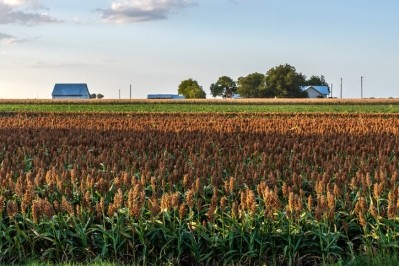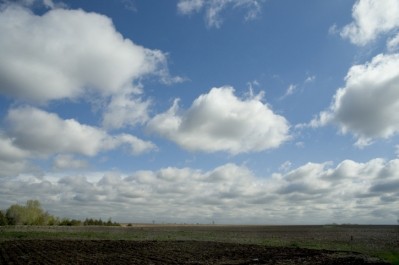USDA: Poor weather, low temps delay feed crop progress

The US Department of Agriculture (USDA) released details regarding the planting and growth of several feed crops including corn, soybeans, wheat and sorghum on Monday [June 17.]
The details followed reports, initially from Reuters, that some Illinois corn producers had given up on planting this year because of ongoing rain and flooding, deciding instead to have a prevent plant party.
Prevented planting
Prevented planting references financial support provided in some crop insurance policies, according to the USDA.
The measure supports producers when they fail to plant an insured crop during a set window for a specific reason.
It is “unfortunately comical” that producers had the time to have a party during planting season, said Tricia Braid, director of communications with the Illinois Corn Growers Association. Adding that, that response to the planting situation has not been a common one.
It is hard to tell how many acres were prevented from being planted causing farmers to use prevented planting insurance, she told us. “They’re not sharing the way they might [when they] finished all their corn planting,” she added.
“In terms of acres getting planted, the impulse is to plant the crop, it’s not to not plant the crop,” she said. Even if taking prevented planting crop insurance may be the only option at some point, she added.
“Until that arrives, the instinct is to look for the window to plant – even if it’s not the best outcome,” she said. “It feels like the right thing to do, rather than making the prevent plant choice.”
Most producers in Illinois have stopped planting new fields of corn, Braid said. However, there may be some replanting into areas that flooded taking place.
Growers now are looking for some higher temperatures for the crop, she said. The ongoing cool weather could be “problematic for corn growth.”
“We could grow out of this if conditions straighten up,” she said. “Otherwise it’s going to be a learning opportunity for all of us.”
Overall, US planting and feed crop development for the upcoming crop lags the previous pace of planting and emergence, the USDA said.
On average across the US, 21% of acres have excess or surplus water, the department said. In the Corn Belt, Illinois had 36% of acres with excess water, Indian had 45%, Michigan 66%, Missouri 26% and Ohio 71%.
Corn developments
For the 18 states responsible for the majority of the corn crop, planting has reached about 92%, the USDA reported.
However, the only states that have reported completing their planting are North Carolina, Tennessee and Texas.
Last year at this point, and on average 100% of the corn crop had been planted by this point in the year, the department said.
States that have less than 90% of their crop in the ground include, Illinois – reporting that 88% of its corn crop has been planted, Indiana and Michigan – both with 84%, South Dakota – at 78% and Ohio with 68% of the feed crop planted.
The USDA dropped the anticipated size of the corn crop last week, said Chad Hart, associate professor of economics, crop market specialist and extension economist with Iowa State University previously.
The anticipation is that the acreage planted could continue to fall and yield also may drop.
“We’ll be playing a game looking at crop conditions,” he added as it is unclear how yield could develop for corn.
For the crop that has been planted, emergence has started although it is behind previous years, the department said. Last year, and on average, about 97% of the crop has spouted by this point and this year 79% of the crop is visible.
The five states seeing the least development for the planted feed crop include Indiana, Michigan, Ohio, South Dakota and Wisconsin, the department said.
Corn crop condition also is not where it was last year, the USDA reported. At this stage, last year about 78% of the crop had earned a good or excellent rating and this year 59% has earned either score.
“We’ve not gotten the growing degree days,” Hart said. “We’re still in decent shape but you can see the difference [to previous years] … it’s not as green as we’d like.
Soybean progress
Although soybean planting has progressed, it remains behind, the USDA said. Last year about 96% of the crop had been planted by this point and this year 77% of the crop is in the ground.
The states reporting having planted 70% or less of the crop out of the 18 states responsible for the majority of the crop include Illinois, Indiana, Michigan, Missouri, Ohio and South Dakota, the department said.
Planting in those areas ranges from Ohio – with 46% of the crop in the ground to Illinois and South Dakota both reporting 70%.
About 55% of the planted acres have seen crops emerge, said the department. Last year at this time about 89% of the crop had sprouted.
States seeing the most progress in crop development include Louisiana and Mississippi, the department said.
Wheat details
Winter wheat development progresses as 89% of the crop has “headed,” the USDA said. However, last year 94% had reached that stage by this time.
The pace of harvest is slower than what has been seen in the past year, the department said. Last year a quarter of the crop had been collected by this time and this year 8% has been.
States seeing the most progress toward harvest include Arkansas, California, North Carolina and Texas, the department added. But, nine states have yet to start.
Condition of the crop is outperforming previous years, the department said. Last year 39% of the crop had earned good or excellent scores and this year 64% of the crop has.
About 95% of the spring wheat crop has emerged and about 2% has headed, the USDA said. Last year, 97% had sprouted by this time and 8% reached the heading stage.
Sorghum, barley and oats
Planting for this year’s sorghum crop has progressed, but continues to trail the previous rate of planting, the USDA said. About 69% of the crop is in the ground, down from 88% at this time last year.
Crop development is similar to previous years as about 15% of the crop has headed – compared to 18% last year and 16% on average, the department said.
Barley sprouting has almost reached previous years as 92% of the crop has emerged, the department said. Last year 95% had sprouted by this time.
However, the pace of development is slightly slower as only 2% of the crop has headed, while last year 7% had reached that stage and on average 12% has, the department added.
Oat production has followed a similar path with 94% of the crop emerged – down slightly from the 98% that had done so last year, the USDA said. However, only 33% of the crop has headed, while half the crop had done so by this time last year.












